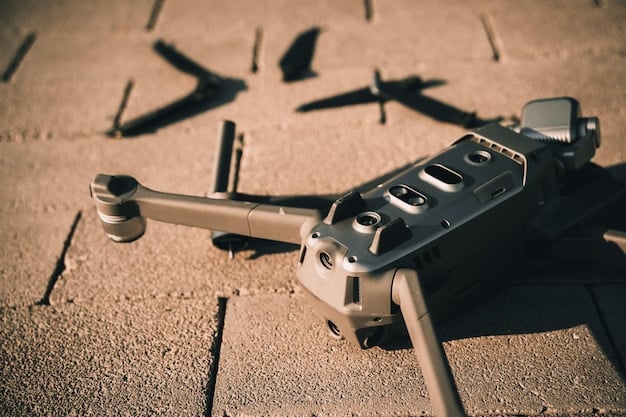US Military AI Spending to Reach $15 Billion by 2027: New Report

A new report projects that United States military spending on artificial intelligence will surge to $15 billion by 2027, driven by advancements in AI technology and increasing needs for national security.
The United States military is poised to significantly increase its investment in artificial intelligence, with spending projected to reach $15 billion by 2027, according to a new report. This surge reflects the critical role AI is expected to play in future military operations and national defense strategies.
US Military’s AI Spending Surge: The Key Findings
A recent report highlights the escalating investment of the U.S. military in artificial intelligence. This projection underscores the growing importance of AI in defense strategies and technological advancements within the armed forces.
Investment Growth
The report emphasizes the substantial increase in funding allocated to AI technologies. This investment is geared toward enhancing military capabilities and maintaining a competitive edge in global defense.
Driving Factors
Several factors contribute to this surge, including advancements in AI technology, increasing needs for national security, and the strategic importance of AI in modern warfare. These elements collectively drive the need for greater financial commitment.
- Technological Advancement: Rapid progress in AI is making it a critical component for defense applications.
- National Security: AI enhances threat detection, cybersecurity, and autonomous systems, bolstering national security.
- Strategic Importance: AI’s role in modern warfare necessitates significant investment to maintain military advantage.

These findings highlight a pivotal shift in military strategy, emphasizing AI as a core element of future defense initiatives. The detailed analysis within the report provides valuable insights into the implications of this growing investment.
AI Applications in Modern Warfare
Artificial intelligence is revolutionizing various aspects of modern warfare. Its applications range from enhancing situational awareness to improving the precision and efficiency of military operations.
Enhanced Situational Awareness
AI algorithms can process vast amounts of data from multiple sources to provide real-time insights. This capability enhances situational awareness, enabling military personnel to make informed decisions quickly.
Autonomous Systems
AI-powered autonomous systems, such as drones and unmanned vehicles, play a vital role in reducing human risk and extending operational capabilities. These systems can perform tasks ranging from surveillance to reconnaissance with minimal human intervention.
- Drones: AI-driven drones provide real-time surveillance, reconnaissance, and targeted strikes.
- Unmanned Vehicles: Autonomous vehicles enhance logistics, transportation, and combat support.
- Cybersecurity: AI protects critical infrastructure and defends against cyber threats.
The integration of AI into modern warfare is transforming military strategies and tactics, making operations more effective and adaptable to evolving threats.
Cybersecurity and AI: Protecting Critical Infrastructure
Cybersecurity is a critical domain where artificial intelligence plays an increasingly vital role. AI technologies are essential for protecting critical infrastructure and defending against sophisticated cyber threats.
Threat Detection
AI algorithms excel at identifying and analyzing patterns indicative of cyberattacks. By continuously monitoring network traffic and system logs, AI can detect anomalies and alert security personnel to potential threats.
Incident Response
AI can automate incident response processes, enabling rapid containment and mitigation of cyberattacks. This capability reduces the dwell time of attackers and minimizes the impact of security breaches.

These applications underscore the importance of AI in maintaining the integrity and security of critical infrastructure, ensuring the continuity of essential services.
The Ethical Implications of AI in the Military
As the U.S. military integrates artificial intelligence into its operations, ethical considerations become paramount. It is essential to address the potential risks and challenges associated with AI to ensure responsible and ethical deployment.
Autonomous Weapons Systems
The development and deployment of autonomous weapons systems raise significant ethical concerns. The ability of AI to make life-or-death decisions without human intervention raises questions about accountability and the potential for unintended consequences.
Bias and Discrimination
AI algorithms can inherit biases from the data they are trained on, leading to discriminatory outcomes. It is crucial to ensure that AI systems used in military applications are fair, transparent, and free from bias.
- Accountability: Establishing clear lines of accountability for the actions of AI systems.
- Transparency: Ensuring the transparency of AI algorithms to identify and mitigate potential biases.
- Human Oversight: Maintaining human oversight in critical decision-making processes involving AI.
Addressing these ethical considerations is essential for fostering trust and ensuring that AI is used responsibly within the military context.
Training and Development: Preparing the Workforce
To effectively leverage artificial intelligence in military applications, it is crucial to invest in training and development programs. These initiatives aim to prepare the workforce with the skills and knowledge necessary to operate and maintain AI systems.
Educational Programs
The military is developing comprehensive educational programs to train personnel in AI-related fields. These programs cover topics such as machine learning, data science, and AI ethics.
Partnerships with Academia
Collaborations with universities and research institutions play a vital role in advancing AI education and research. These partnerships facilitate the transfer of knowledge and expertise, accelerating the adoption of AI technologies within the military.
By prioritizing training and development, the U.S. military can ensure that its workforce is well-equipped to harness the full potential of AI, driving innovation and enhancing operational capabilities.
Future Trends in Military AI
The future of artificial intelligence in the military is characterized by continuous innovation and expanding applications. Several key trends are expected to shape the landscape of military AI in the coming years.
AI-Driven Decision Making
AI will play an increasingly prominent role in decision-making processes, providing military leaders with real-time insights and predictive analytics. This capability will enable more informed and strategic decisions, improving operational effectiveness.
Integration with IoT
The integration of AI with the Internet of Things (IoT) will create a network of interconnected devices and sensors, enhancing situational awareness and enabling more adaptive and responsive military operations.
- Predictive Analytics: AI uses historical data to forecast potential threats and optimize resource allocation.
- Real-Time Insights: AI provides immediate analysis of complex data streams for better decision-making.
- Adaptive Systems: AI-driven systems adjust to changing conditions, enhancing operational flexibility.
These future trends highlight the transformative potential of AI in reshaping military strategies and tactics, underscoring the importance of continued investment and innovation in this field.
| Key Point | Brief Description |
|---|---|
| 📈 AI Spending Growth | US military AI spending projected to reach $15 billion by 2027. |
| 🛡️ Cybersecurity | AI enhances threat detection and incident response in cybersecurity. |
| 🤖 Autonomous Systems | AI-powered drones and vehicles reduce human risk and extend capabilities. |
| 🧑💻 Workforce Training | Training programs prepare military personnel for AI systems. |
Frequently Asked Questions
▼
The report projects that the United States military spending on artificial intelligence will reach $15 billion by 2027, reflecting a significant increase in investment.
▼
AI enhances cybersecurity by automating threat detection processes, enabling rapid responses to cyberattacks, and protecting critical infrastructure.
▼
Ethical considerations include accountability, transparency, and the potential for bias in AI systems. These concerns need to be addressed to ensure responsible use.
▼
The military is investing in educational programs and partnering with academic institutions to train personnel in AI-related fields, enhancing their skills and knowledge.
▼
Autonomous systems, such as AI-powered drones and unmanned vehicles, reduce human risk, extend operational capabilities, and provide real-time surveillance and reconnaissance.
Conclusion
The projected increase in U.S. military spending on artificial intelligence to $15 billion by 2027 underscores the transformative potential of AI in modern warfare. From revolutionizing cybersecurity to enhancing autonomous systems, AI is poised to reshape military strategies and tactics, necessitating further investment and innovation in this critical field.





